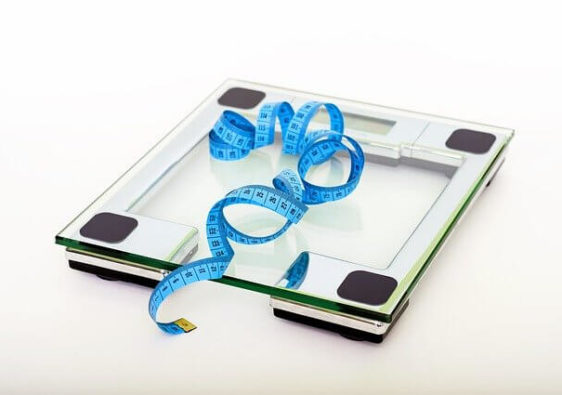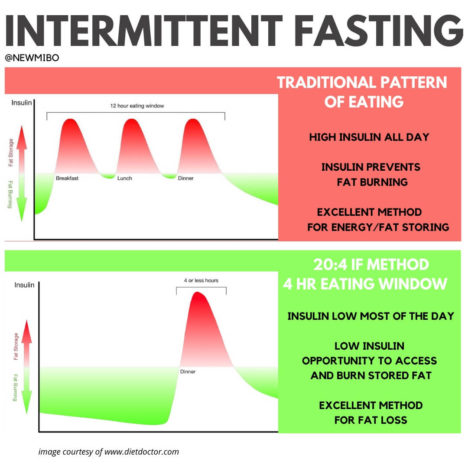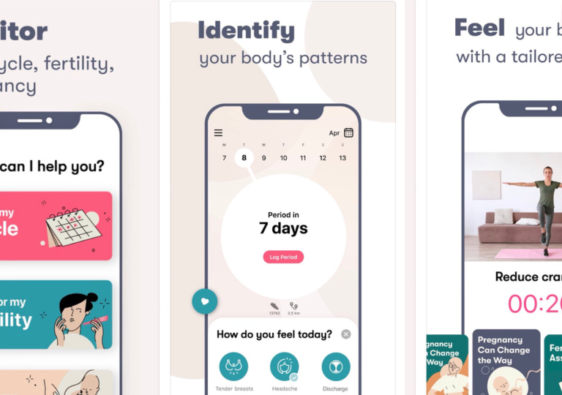Recently I’ve received this question and a few more of similar nature, which is why I feel it deserves a more detailed answer.
Question:
“I’ve been following the 16:8 method and I’m not losing weight, is it normal?”
Firstly, a little bit of a disclaimer. I am going to assume that this is a healthy person who currently carries excess weight, falls either into the overweight or obese category. Let’s also assume there are no other medical issues that could stand in the way of weight loss. I will address the possible, common issues and shall conclude by offering alternatives.
16:8
The 16:8 fasting method is based on the principle of fasting 16 hours per day and having a reduced eating window of 8 hours within that day. This could mean from 12noon until 20.00 of technically unlimited eating. We could say that most people who skip breakfast are unknowingly following the 16:8 method. Here are possible issues to consider if you’re not losing weight:
1. EXCESS IS EXCESS

being overweight means that you are consistently taking in enough energy to also keep some stored on your body in the form of fat. Excess weight is the body’s stored energy. I’m going to use numbers and illustrate this in terms of calories for clearer understanding. Let’s say you’ve been eating in excess of 500 kcal and therefore gaining weight. Now you have decided to practice the 16:8 method, so you start skipping breakfast. As a result, you would have reduced your excess energy by perhaps 300kcal ( the value of skipped breakfast) but you could still be eating in excess of 200 kcal throughout the day therefore not lose any weight, in fact you could still be gaining weight. All you did by skipping breakfast was reduce the rate and the amount of weight you are going to gain. In other words, skipping breakfast may not create enough caloric deficit for you to start losing weight.
Most people overeat in the evening, through mindless or constant snacking, emotional eating, and the weekends. Skipping breakfast is not enough to balance this out.
2. LONG EATING WINDOW
The 16:8 method is a great starting point to get used to fasting and to build up mental endurance. However, let’s be honest, an 8 hour eating window only seems restrictive because we have as a society normalised eating from the moment we wake up until the moment we are ready to hit the bed. This is by no means how our ancestors used to eat, not even our grandparents are down with this constant non-structured way of eating. The 16:8 method should be a “normal” way of eating and not even considered part of intermittent fasting, let alone a weight loss method.
It may work for some, but it is not unusual if it doesn’t. Having an 8 hour eating window has never worked for me, it isn’t long enough to help me eat less or to prevent me from overeating. I have only used this method at the very beginning to get accustomed to fasting. Not even 4,5 years later can I afford to follow this method because I’m honest with myself and I know I would easily gain weight. I generally keep my eating window within 4 hours and regularly include extended 24-36 hour fasts. This allows me to eat without restrictions, without exercising (if I choose not to) and I’m maintaining my initial weightloss
3. FAT BURNING

16 hours of fasting is considered the “sweet spot” for fat burning, it is when fat burning starts. In order to benefit from it, you would ideally extend your fasting window beyond this point.
If you’re not fat adapted, i.e you’ve not been doing a lot of consistent long enough fasting or you’re not on a low carb diet, then your body is still using sugar as its main energy source. Your body is likely not burning fat at this stage. 16 hours may just not be long enough for your body to be able to switch to a fat burning mode.
16 hours may be beneficial for someone already fat adapted, as mentioned above, but it is very unlikely that a person who is on a high carb diet and somewhat new to fasting, will become a fat burning machine with this method.
If you have excess energy aka fat stored on your body, you can afford to fast longer than 16 hours. A longer fast will allow your body to start using that stored energy for fuel. Let your body use what it already has before you supply it with more food.
ALTERNATIVES
Fasting is a fantastic weight loss tool because it offers so many options and varieties. You can always change the hours, fast longer or more often, if you’re not seeing results with your current method.
- you can extend your daily fasting window, from 16 hours up to 23 hours. You can try the 20:4 method, the Fast-5 method or OMAD
- you can try TMAD where you only eat 2 meals with no snacks in between
- you can introduce extended fasting of 24 hours once/twice per week each week
- you can challenge yourself to a 36 hour fast once/twice a week
- you can try Alternate Day Fasting where you only eat every other day, followed by a full day of fasting. This has been the most studied method with proven weight loss results and health benefits.
- if you still want to carry on with the 16:8 method you might need to include counting calories so that you know exactly how much you’re eating and take it from there
To conclude, “Is it normal not to lose weight following the 16:8 method?” Yes, it is very normal and very common. In fact it wouldn’t be abnormal to gain weight within an 8 hour eating window.
It may be a great method to start with, for maintenance once you have reached your goal weight, for people who are very active, for people who count calories, for people on a ketogenic diet or for weekend fasting.
Hope you have found this helpful xoxo



